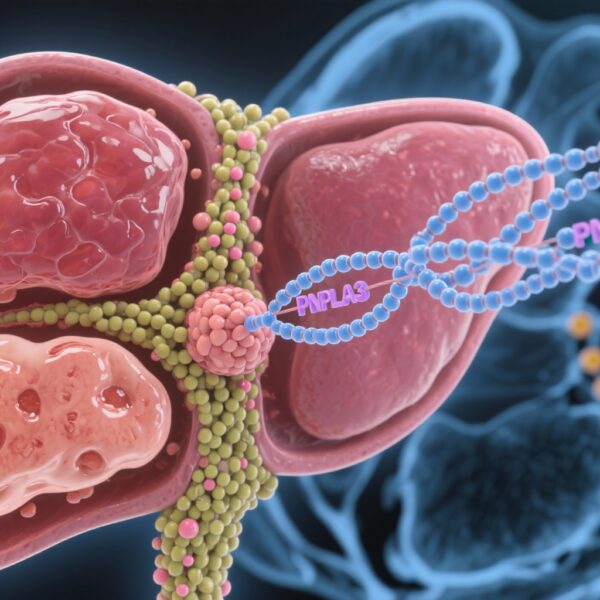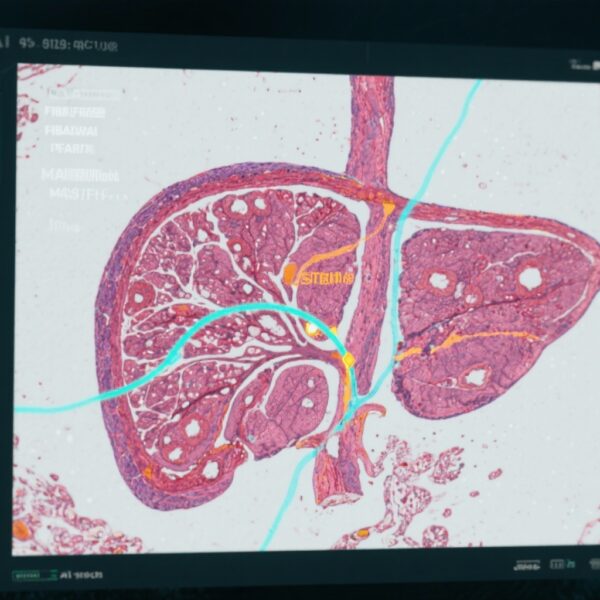Highlight
– HEC88473, a dual GLP-1/FGF21 agonist, significantly reduces liver fat measured by MRI-PDFF in MASLD patients with T2DM.
– The treatment improves glycemic control with notable HbA1c reductions and favorable effects on lipid metabolism within 5 weeks.
– The drug exhibited a generally safe profile with mostly mild to moderate gastrointestinal adverse events.
Study Background and Disease Burden
Metabolic dysfunction-associated steatotic liver disease (MASLD), formerly often categorized under nonalcoholic fatty liver disease (NAFLD), represents a major health challenge linked to obesity, insulin resistance, and metabolic syndrome. MASLD affects a substantial proportion of the global population and frequently coexists with type 2 diabetes mellitus (T2DM), amplifying risks of cardiovascular and hepatic complications. Currently, treatments specifically targeting hepatic steatosis in this patient group remain limited.
Glucagon-like peptide-1 (GLP-1) receptor agonists have emerged as effective agents for glycemic control and weight management, with additional benefits on liver fat. Fibroblast growth factor 21 (FGF21) also plays a critical role in regulating lipid metabolism and glucose homeostasis. The dual agonist approach combining GLP-1 and FGF21 receptor activation represents a novel therapeutic strategy aimed at addressing overlapping pathophysiological mechanisms in MASLD and T2DM.
Study Design
This investigation was a randomized, double-blind, placebo-controlled, multiple-ascending-dose phase Ib/IIa clinical trial evaluating the novel GLP-1/FGF21 dual agonist, HEC88473. Sixty adult patients diagnosed with MASLD and T2DM were enrolled and randomized in a 10:2 ratio to receive either HEC88473 or placebo. Five dosing cohorts received weekly subcutaneous injections of HEC88473 at escalating doses of 5.1, 15.3, 30.6, 45.9, or 68.0 mg for 5 weeks.
Primary endpoints included safety and tolerability assessments, while key pharmacodynamic endpoints comprised changes in hepatic fat content measured by magnetic resonance imaging-proton density fat fraction (MRI-PDFF), glycated hemoglobin (HbA1c), fasting and postprandial blood glucose levels, and lipid profile parameters.
Key Findings
After 5 weeks of treatment, HEC88473 demonstrated a profound, dose-dependent reduction in liver fat content. The most substantial relative mean decrease of -47.21% (p = 0.0143) was observed in the 30.6 mg cohort, compared to a -15.05% reduction in the placebo group. Importantly, patients with baseline hepatic fat fraction exceeding 8% exhibited a higher frequency of >30% relative fat reductions, underscoring potential clinical relevance.
Glycemic control improved significantly with HEC88473, as evidenced by reductions in HbA1c levels. The largest mean HbA1c decline was -1.10% in the highest dose group (68.0 mg), compared with a nominal -0.31% reduction in placebo recipients. Correspondingly, fasting and postprandial glucose levels were favorably impacted across all active treatment arms.
Lipid metabolism markers also showed improvement during the treatment period, suggesting a broader metabolic benefit. These changes collectively support HEC88473’s efficacy in mitigating multiple features of the metabolic syndrome.
Safety assessments revealed that HEC88473 was generally well tolerated. Most adverse events were mild to moderate in severity, with gastrointestinal disorders—such as nausea and diarrhea—being the most common, reported in 48.3% of participants receiving the drug. No serious adverse events related to treatment were reported.
Expert Commentary
The trial presents compelling proof-of-concept evidence supporting the dual agonist approach targeting GLP-1 and FGF21 for patients suffering from dual diagnoses of MASLD and T2DM. By simultaneously modulating glucose and lipid metabolism pathways, HEC88473 addresses the multifactorial nature of metabolic syndrome.
While the study’s short duration and relatively small sample size limit definitive conclusions regarding long-term safety and efficacy, the robust reductions in hepatic steatosis and significant glycemic improvements after only 5 weeks are clinically promising. Larger, longer-term studies are warranted to evaluate sustained impacts on liver histology, cardiovascular outcomes, and safety profile profiles.
Additionally, emerging clinical guidelines increasingly recognize MASLD as a systemic metabolic disorder necessitating integrated treatment strategies. The dual agonist concept exemplified by HEC88473 aligns well with this evolving clinical paradigm.
Conclusion
The phase Ib/IIa trial of HEC88473 demonstrates that a GLP-1/FGF21 dual agonist is a promising new pharmacological option for patients with metabolic dysfunction-associated steatotic liver disease complicated by type 2 diabetes. Five weeks of treatment yielded significant reductions in liver fat accumulation, notable improvements in glycemic control and lipid metabolism, with an acceptable safety profile.
These findings provide an encouraging foundation for further development of dual agonist therapies targeting the intertwined metabolic derangements in MASLD and T2DM, addressing an urgent unmet need. Future phase IIb and III trials are crucial to confirm long-term clinical benefits, elucidate mechanisms, and define patient populations most likely to benefit from HEC88473 therapy.
References
Xiang L, Wang G, Zhuang Y, Luo L, Yan J, Zhang H, Li X, Xie C, He Q, Peng Y, Chen H, Li Q, Li X, Guo L, Lv G, Ding Y. Safety and efficacy of GLP-1/FGF21 dual agonist HEC88473 in MASLD and T2DM: A randomized, double-blind, placebo-controlled study. J Hepatol. 2025 Jun;82(6):967-978. doi: 10.1016/j.jhep.2024.12.006. Epub 2024 Dec 19. PMID: 39709140.


